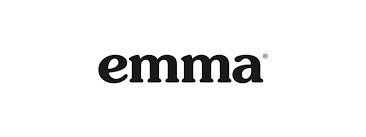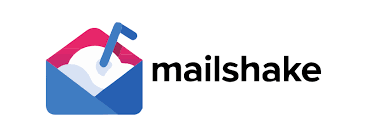Hey there, savvy marketers! In the ocean of email marketing tools, making the right choice can feel like finding a pearl. Today, we’re zooming in on two popular contenders: Emma and Mailshake. Whether you’re a small business owner, a marketing professional, or just someone curious about email marketing, this comparison is crafted for you. We’re here to dissect, analyze, and compare these tools, helping you decide which one is the perfect fit for your marketing needs. Let’s embark on this journey with a focus on one of the most critical aspects
| Emma Email Marketing Tool | Mailshake |
|---|---|
 |  |
| G2 Score – 4.0 out of 5 stars | G2 Score – 4.7 out of 5 stars |
| TrustRadius Score – 8.6/10 | TrustRadius Score – 8.9/10 |
User Experience and Interface
Navigating Your Marketing Tool
The user interface of an email marketing tool is like the cockpit of a plane. It’s where you control and navigate your campaigns, and its design can significantly impact your marketing flight. Let’s compare Emma and Mailshake to see which cockpit offers a better flying experience.
Emma: The Friendly Skies of Email Marketing
Emma’s interface is like stepping into a cockpit that’s intuitive, clean, and user-friendly. It’s designed to make your email marketing journey smooth and enjoyable. The dashboard is a breeze to navigate, making it a hit with marketers who value simplicity and ease of use. It’s perfect for those who want to focus on crafting great content without getting bogged down by a complex interface.
Creating emails in Emma is like having a friendly co-pilot. The platform offers a drag-and-drop editor, making designing emails an easy and enjoyable task. Even if you’re not a design expert, you’ll find Emma’s templates and customization options a delight to use, helping you create professional-looking emails in no time.
When it comes to managing your campaigns and audience, Emma makes it simple. The platform provides straightforward tools for segmentation and analytics, turning the often overwhelming task of data analysis into a manageable and insightful process.
Mailshake: For the Data-Driven Aviator
Switching to Mailshake, the interface feels like a cockpit equipped for a data-driven pilot. It’s a platform that caters to users who love having a variety of tools at their fingertips. While Mailshake might have a steeper learning curve compared to Emma, it compensates with its robust set of features and customization options.
Mailshake’s email editor offers flexibility and a range of advanced features. It’s designed for those who want to dive deep into every detail of their email’s design and functionality. If you’re someone who enjoys having control over every aspect of your email campaigns, Mailshake provides the tools to make that happen.
Campaign management and analytics in Mailshake are comprehensive. The platform offers detailed insights into your campaign’s performance, allowing you to make data-driven decisions. It’s like having an advanced navigation system that guides you through the complexities of email marketing analytics.
Pricing and Affordability
Evaluating the Cost-Effectiveness
In the quest for the ideal email marketing tool, pricing is a pivotal factor. It’s essential to strike a balance between the features you need and the price you’re willing to pay. Let’s delve into the pricing models of Emma and Mailshake, examining which tool offers the best value for your investment.
Emma
- Pricing is typically tiered based on features and list size:
- Pro Plan: Offers automation, segmentation, and analytics. Pricing usually starts at around $89/month.
- Plus Plan: Includes additional features like landing pages and A/B testing. Pricing is higher and usually requires a quote from Emma.
- Enterprise Plan: Custom pricing for advanced needs like custom integrations and dedicated support.
Mailshake
- Email Outreach Plan: Priced at $59/user/month when billed annually. Includes features like email personalization, lead catchers, and analytics.
- Sales Engagement Plan: Priced at $99/user/month when billed annually. Includes additional features like phone dialer, social selling, and Salesforce integration.
- Both plans offer features tailored for sales teams and agencies focusing on cold email outreach and sales engagement.
Emma: Customized Pricing for Varied Needs
Emma’s approach to pricing is akin to offering a personalized shopping experience. Their pricing structure is designed to cater to different business sizes and needs, making it a versatile choice for a wide range of users. This tiered pricing model allows businesses to select a plan that aligns with their specific requirements and budget, providing flexibility and scalability.
Starting with their basic plan, Emma makes it accessible for smaller businesses or those new to email marketing to begin without a large financial commitment. As businesses grow and their email marketing needs become more complex, they can upgrade to plans that offer more advanced features, like enhanced automation, sophisticated segmentation, and detailed analytics.
However, it’s worth noting that as you access more advanced features with Emma, the costs can escalate. For businesses with budget constraints, this could be a factor to consider. It’s important to evaluate whether the additional features in the higher-tier plans justify the increased investment.
Mailshake: Competitive Pricing with Focus on Volume
Mailshake presents a competitive pricing model that is particularly attractive for budget-conscious businesses or those with varying email marketing needs. Their plans are based on the volume of emails sent, which can be a cost-effective approach for businesses that have large email lists but send emails less frequently.
Despite its competitive pricing, Mailshake doesn’t compromise on the features offered. Even at the entry-level plans, users have access to a comprehensive set of tools, including an advanced email editor, automation capabilities, and in-depth analytics. This makes Mailshake a strong contender for businesses seeking a feature-rich email marketing tool at an affordable price point.
As with Emma, scaling up in Mailshake’s plans for additional features or higher email volumes means an increase in cost. Businesses need to consider their emailing frequency and the level of features they require to choose the most cost-effective plan.

Related: Check out our free SEO suite

Email Automation and Campaign Management
Maximizing Engagement and Efficiency
In the realm of email marketing, the effectiveness of your campaigns hinges on your ability to automate and manage them efficiently. This is where the capabilities of your chosen tool become critical. Let’s dive into how Emma and Mailshake handle email automation and campaign management, and which platform might best align with your marketing strategy.
Emma: Streamlined Automation for Effective Engagement
Emma is designed with a focus on simplifying the process of email automation, making it accessible and efficient for marketers of all levels. This approach is particularly beneficial for those who want to engage with their audience effectively without getting overwhelmed by complex features.
The platform’s automation capabilities allow you to set up various types of automated emails, such as welcome sequences, anniversary messages, and targeted promotions. This level of automation ensures that your audience receives timely and relevant communications, increasing the likelihood of engagement and conversions.
In terms of campaign management, Emma provides an intuitive analytics dashboard. This tool offers a clear view of your campaign performance, including open rates, click-through rates, and subscriber activity. This data is crucial for understanding the impact of your campaigns and making informed decisions to optimize your email strategy.
Mailshake: Advanced Automation for Detailed Campaign Strategies
Mailshake offers a more robust set of automation tools, catering to businesses that require a deeper level of control and customization in their email marketing campaigns. The platform is ideal for marketers who seek to create highly personalized and intricate email sequences.
With Mailshake, you can set up detailed automation workflows based on specific subscriber actions and preferences. This capability allows for a high degree of personalization, ensuring that each subscriber receives content that is most relevant to their interests and behaviors.
Mailshake’s campaign management tools are comprehensive, providing detailed analytics that go beyond basic metrics. You can delve into subscriber behavior, conversion tracking, and A/B testing results, gaining insights that are critical for refining your email marketing strategies.
Integration Capabilities
Enhancing Your Marketing Toolbox
In today’s interconnected digital world, the ability of your email marketing tool to integrate seamlessly with other applications is crucial. It can significantly streamline your workflow and enhance the overall effectiveness of your marketing strategy. Let’s explore how Emma and Mailshake fare in terms of integration capabilities.
Emma: Seamless Integration for a Unified Marketing Strategy
Emma’s approach to integration focuses on creating a seamless connection between your email marketing efforts and other key aspects of your business strategy. Its ability to integrate with a wide range of platforms makes it a versatile choice for businesses looking to centralize their marketing efforts.
The platform offers integration with popular CRM systems, e-commerce solutions, and social media platforms. This means you can easily sync data across different channels, enhancing the personalization and effectiveness of your email campaigns. Additionally, integrating Emma with analytics tools provides deeper insights into how your email marketing aligns with your overall marketing goals.
These integrations are designed to be user-friendly, enabling businesses to set them up without needing in-depth technical knowledge. This ease of integration makes Emma an appealing option for businesses that want a hassle-free way to connect their various marketing tools.
Mailshake: Comprehensive Integration for Diverse Needs
Mailshake provides a broad spectrum of integration options, catering to a diverse range of marketing needs. Its extensive integration capabilities are particularly beneficial for businesses with a complex marketing tech stack or specific, specialized requirements.
With Mailshake, you can connect your email marketing platform with a variety of CRM systems, e-commerce tools, and analytics services. This breadth of integration ensures that businesses can create a highly customized marketing ecosystem, tailored to their unique processes and workflows.
In addition to standard integrations, Mailshake’s API allows for custom connections, offering even more flexibility for businesses with unique needs or those using bespoke systems. This level of adaptability is especially valuable for larger enterprises or businesses with intricate marketing strategies.
Customer Support and Educational Resources
Ensuring a Smooth Marketing Journey
The level of customer support and the availability of educational resources are crucial factors in choosing an email marketing tool. These aspects determine how quickly you can resolve issues and how effectively you can utilize the tool’s features. Let’s evaluate the customer support and educational offerings of Emma and Mailshake to see which tool better equips you for a successful email marketing journey.
Emma: Personalized Support and Comprehensive Learning
Emma is known for its strong focus on customer support, offering personalized assistance to ensure users get the most out of their platform. This approach is beneficial for those who value direct and tailored support in their email marketing endeavors.
The platform offers various channels for customer support, including email, phone, and live chat. Users often commend the responsiveness and helpfulness of Emma’s support team, highlighting their commitment to resolving issues and providing guidance. This level of dedicated support can be a significant advantage, especially for businesses new to email marketing or those facing complex challenges.
In addition to direct support, Emma provides an extensive range of online resources. Their library includes detailed how-to guides, FAQs, and articles on best practices. These resources are designed to help users enhance their email marketing skills, offering value beyond troubleshooting and technical support.
Mailshake: Self-Help Resources and Community Support
Mailshake takes a different approach, focusing more on comprehensive self-help resources and community-based support. This model is ideal for users who prefer exploring and learning independently or those who seek advice and insights from a community of fellow marketers.
Mailshake offers a detailed knowledge base that covers a wide array of topics, from basic setup to advanced features. For users who enjoy digging into resources and solving problems on their own, Mailshake’s extensive self-help library is a treasure trove of information.
While Mailshake also provides customer support through email and live chat, the emphasis is on empowering users with the tools and knowledge to address challenges themselves. Additionally, Mailshake nurtures an active user community, encouraging knowledge sharing and peer-to-peer support, which can be invaluable for staying abreast of the latest trends and strategies in email marketing.
Conclusion
In conclusion, when comparing Emma Email Marketing Tool and Mailshake, it’s evident that both platforms offer distinct features and strengths, catering to different needs and preferences in the realm of email marketing.
Emma stands out for its user-friendly interface, tailored pricing plans, and exceptional customer support. It’s an excellent choice for businesses and marketers who prioritize ease of use, require personalized support, and seek a platform that offers straightforward yet effective email marketing capabilities. Emma’s intuitive design and comprehensive learning resources make it particularly suitable for those new to email marketing or businesses looking for a hassle-free solution.
Mailshake, on the other hand, shines with its advanced automation features, extensive integration options, and self-help resources. It is ideal for businesses and marketers who need a robust platform capable of handling intricate email campaigns and who prefer a hands-on approach with a focus on independence and community-based learning. Mailshake’s flexibility and broad range of features make it a strong contender for those looking to dive deep into email marketing strategies.
Ultimately, the decision between Emma and Mailshake should be based on your specific marketing needs, the level of complexity you’re comfortable with, and your preferred style of learning and support. Both platforms have the capability to enhance your email marketing strategies significantly, but the best choice will depend on your unique business context and goals.
Read Next:
- International Backlink Strategies for Biotech Startups
- Optimizing Multilingual Content for Biotech Firms: Fast and Easy
- Video Marketing and SEO in Lifesciences
- Utilizing Whitepapers to Boost Biotech SEO
- Optimizing Biotech Content for Voice Search Queries






















Comments are closed.